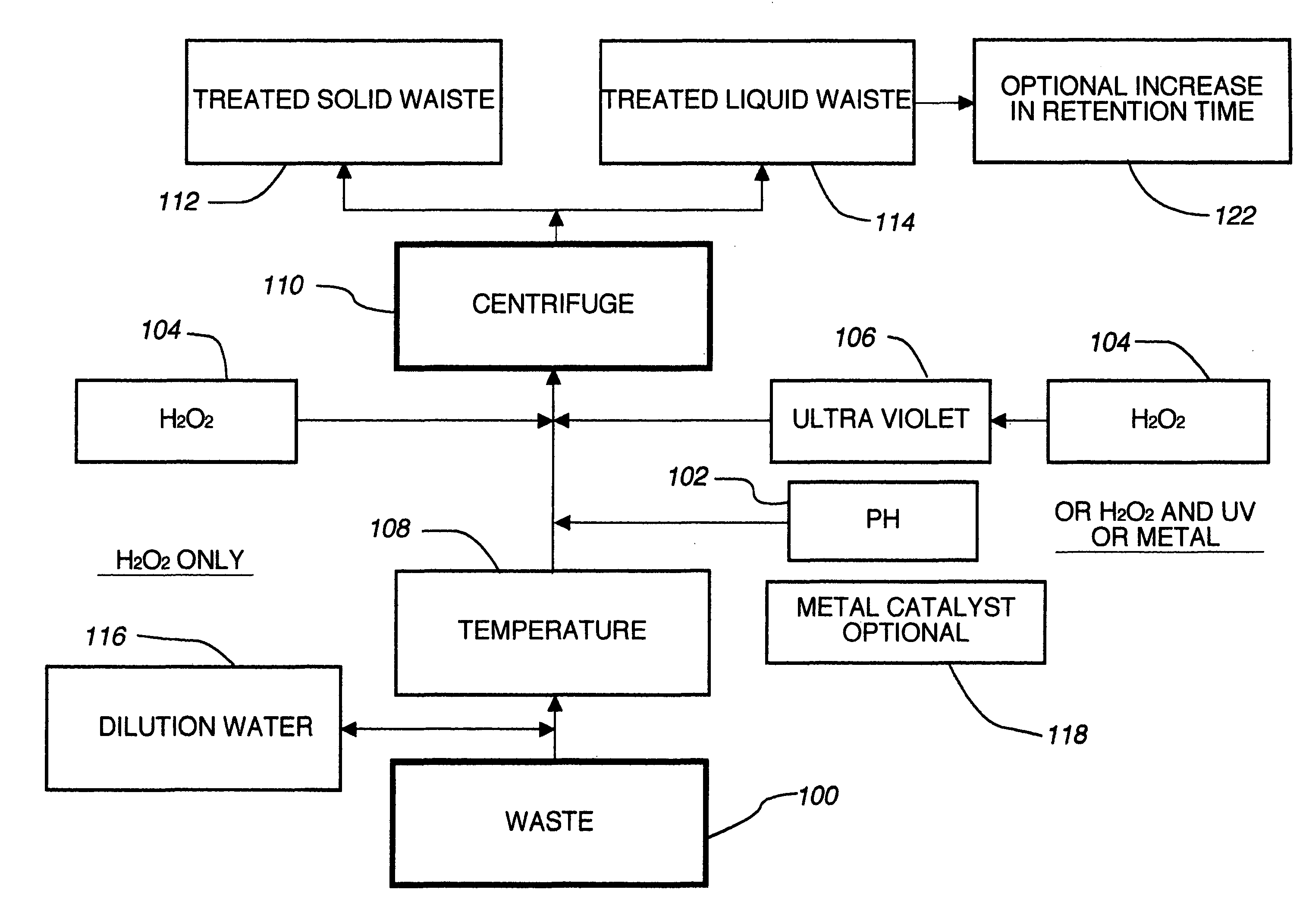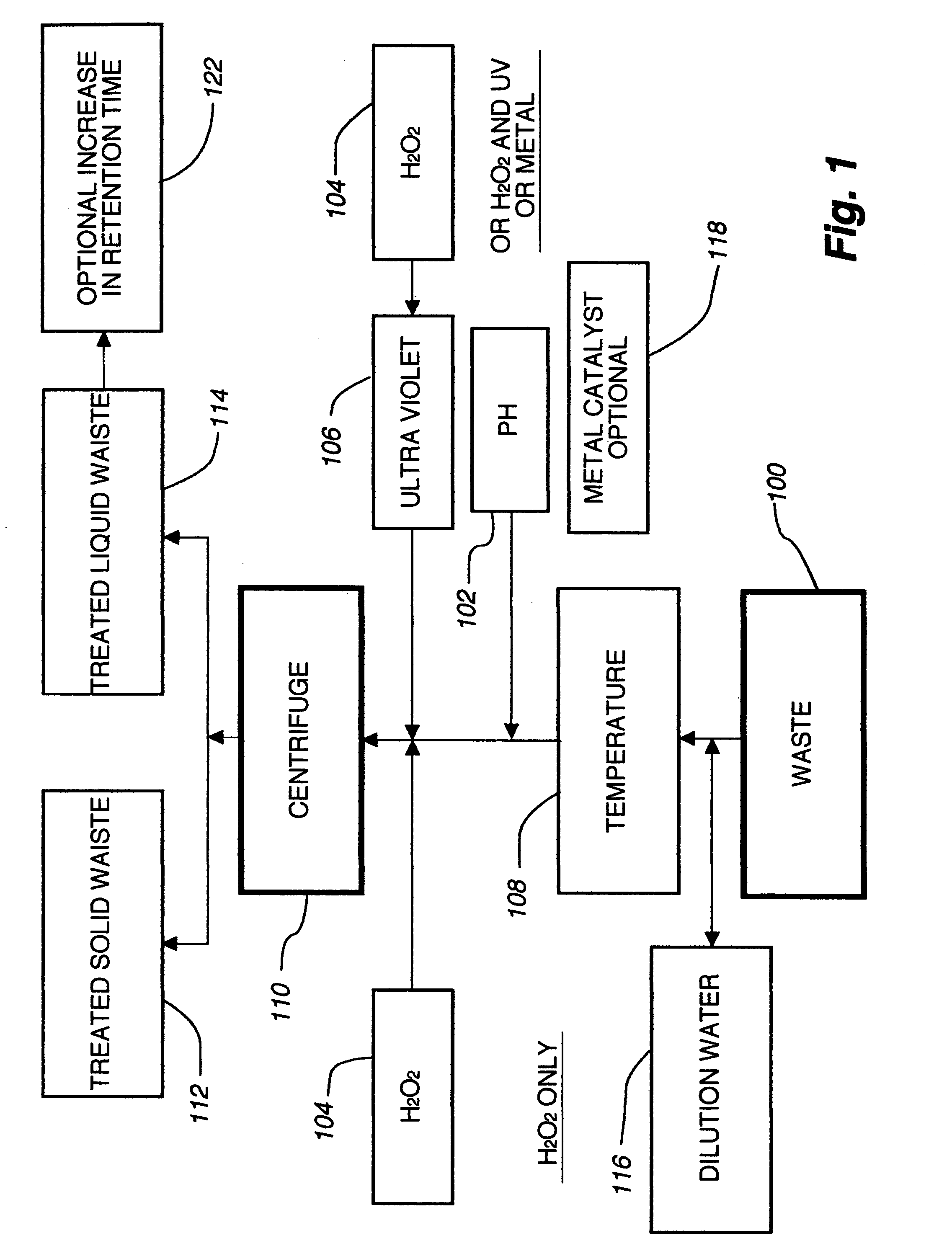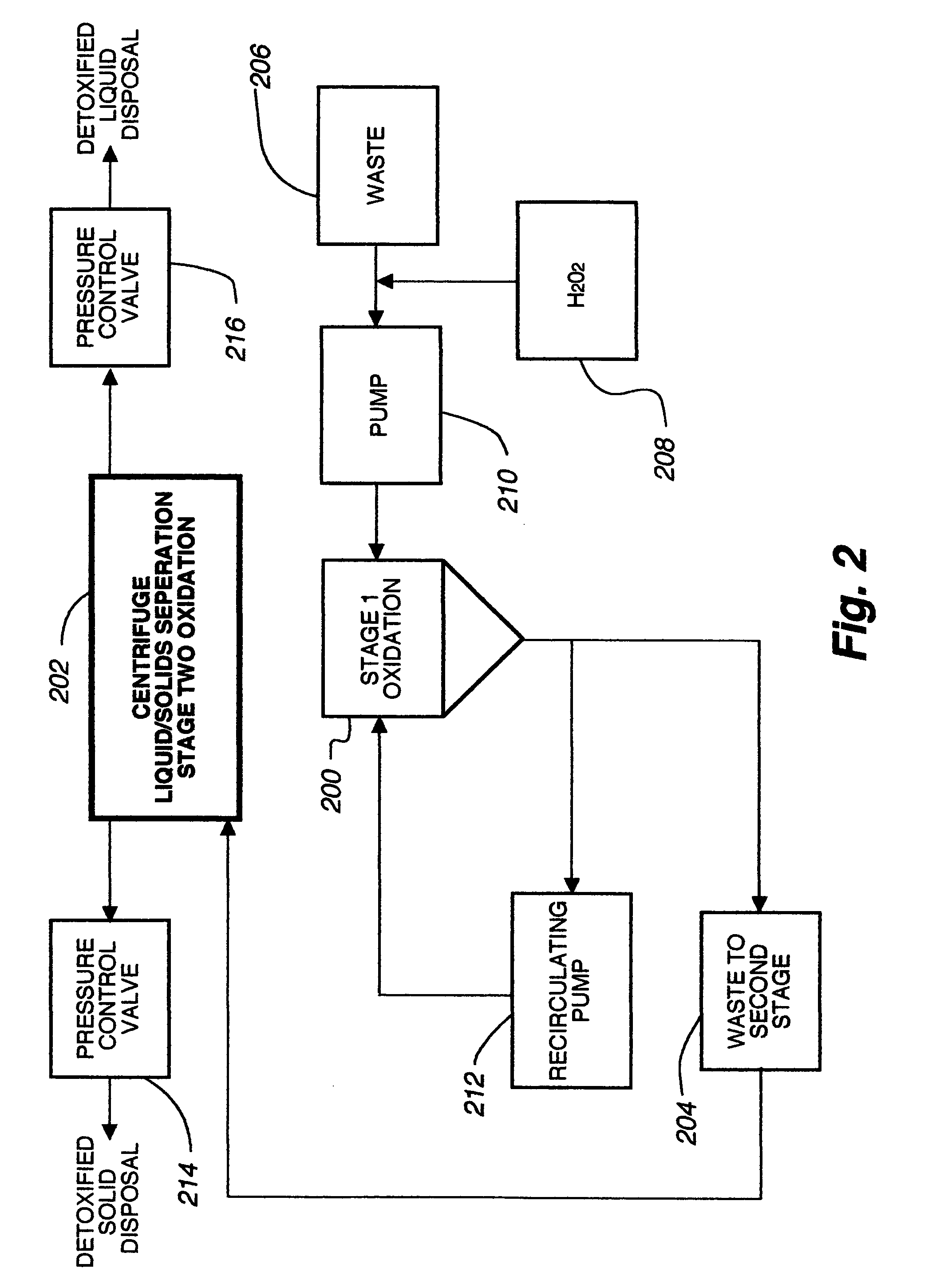Sub-critical oxidative processes
a technology of subcritical oxidative and phase separation, applied in the direction of separation processes, water/sewage treatment by oxidation, water treatment parameter control, etc., can solve the problems of inefficiency of treating sources, the inability to treat organic and inorganic waste materials from industrial and municipal sources, etc., to enhance the mass transfer of gas phase reactants, enhance the mass transfer, enhance the effect of mass transfer
- Summary
- Abstract
- Description
- Claims
- Application Information
AI Technical Summary
Benefits of technology
Problems solved by technology
Method used
Image
Examples
example 1
Combination of Hydrogen Peroxide and Ozone in Waste Fluid Partially Reduces the Organic Waste in a Waste Fluid
[0103] The following example illustrates the effectiveness of the methods and compositions of the present invention for treating a liquid waste. Note that the present example utilizes sub-critical temperatures and pressures to obtain large decreases in the amount of organic contaminants from a starting waste fluid. Note also that relative to the amount of oxidizing agents used in connection with the present invention, large decreases in organic materials from the waste fluid is achieved. Such dramatic results are attributable to the formation of hydroxyl radicals in waste fluid and that have enhanced reactivity with the organic contaminates in the waste fluid.
[0104] Liquid chemical waste obtained from a chemical plant, having approximately 760 mg / L acetone and 2,100 mg / L acetonitrile, was treated with hydrogen peroxide and then ozone added over a period of three hours. Sam...
example 2
Combination of Hydrogen Peroxide and Fenton Reagent Effectively Oxidizes Organic Wastes in a Waste Stream
[0109] As was the case in Example 1, the following example illustrates the effectiveness of the methods and compositions of the present invention for treating a waste fluid, especially with respect to conditions that support hydroxyl radical formation. Note that the present example utilizes sub-critical temperatures and pressures to obtain relatively large decreases in the amount of organic contaminants from the start to completion of the reaction(s) within the waste fluid. Note also that relative to the amount of oxidizing agents used in connection with the present invention, large decreases in organic materials from the waste fluid are achieved. This is a result of conditions that enhance and favor hydroxyl radical formation.
[0110] Waste fluid streams (one liter) containing hydrogen peroxide (approximately 1,500 mg / L) were treated with Fenton's reagent (approximately 1,000 mg...
example 3
Hydrogen Peroxide and Ozone Achieve Total Reduction in Waste Fluid Levels of Acetone and Acetonitrile
[0112] The following example illustrates the effectiveness of the methods and compositions of the present invention for treating a liquid waste having high levels of acetone and acetonitrile. As in the previous two examples, the present example utilizes sub-critical temperatures and pressures to obtain near total reduction in the amount of measured contaminates from a starting waste fluid. In addition, the present results support a conclusion that embodiments of the present invention, using continuous flow conditions, would achieve near total oxidation of contaminates within a waste fluid in much faster times than achieved using conventional technologies.
[0113] Seven liters of liquid chemical waste was obtained from a chemical plant, the waste having approximately 750 mg / L acetone and 2,100 mg / L acetonitrile. The pH of the waste was maintained at about 7.5 at an ambient temperature...
PUM
| Property | Measurement | Unit |
|---|---|---|
| pressure | aaaaa | aaaaa |
| pressure | aaaaa | aaaaa |
| temperature | aaaaa | aaaaa |
Abstract
Description
Claims
Application Information
 Login to View More
Login to View More - R&D
- Intellectual Property
- Life Sciences
- Materials
- Tech Scout
- Unparalleled Data Quality
- Higher Quality Content
- 60% Fewer Hallucinations
Browse by: Latest US Patents, China's latest patents, Technical Efficacy Thesaurus, Application Domain, Technology Topic, Popular Technical Reports.
© 2025 PatSnap. All rights reserved.Legal|Privacy policy|Modern Slavery Act Transparency Statement|Sitemap|About US| Contact US: help@patsnap.com



